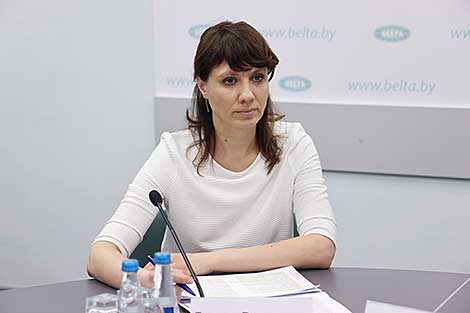Business news
Belarus’ Chernobyl aftermath recovery costs totaled

MINSK, 20 April (BelTA) – Belarus has spent and continues spending a lot on alleviating consequences of the accident at the Chernobyl nuclear power plant. Tatiana Dekhterenok, Head of the Central Office for Financing Social Sphere and Science of the Belarusian Finance Ministry, made the statement at a meeting of BelTA’s Expert Community project held on 20 April to discuss “Chernobyl – a land where people can live. Belarusian experience of revival and development of polluted territories”.
Tatiana Dekhterenok said: “We do spend a lot on the program on alleviating consequences of the Chernobyl nuclear power plant accident. The state budget spent $19.3 billion in 1990-2021. Attention was primarily paid to enabling conditions for radiation, ecological, and economic rehabilitation of territories in Gomel Oblast, Mogilev Oblast, and Brest Oblast as the regions most affected by radioactive pollution.”
In line with the program out of the total sum of $19.3 billion about $8.4 billion was spent on social welfare, medical services, and rehabilitation of the affected population, including the improvement of sanatorium and resort treatment, organization of free meals for the underage kids, who live or study in polluted territories.
As much as $9.1 billion was allocated for the social and economic development of the affected territories, including over $7 billion in 1990-2000. The money was spent on building water supply systems, gas distribution pipelines, homes for citizens and specialists, who came to work in polluted territories, and on implementing special projects. A total of $9.1 billion was allocated for this purpose over the years.
Radiation protection and pinpoint application of protective measures, including in agriculture and forestry industry, the dismantling of unfit structures and installations were funded to the tune of $1.6 billion in this period.
About $1 million is allocated every year to finance scientific and information support, including the acquisition of new knowledge in the area of radiobiology and radioecology, on forecasting the population’s irradiation doses, on developing new methods for diagnostics and treatment. A total of $0.2 billion was allocated for this purpose since the implementation of Chernobyl programs began.
Money was also allocated for overcoming consequences of the Chernobyl catastrophe as part of the relevant programs of the Union State of Belarus and Russia. Four Belarusian-Russian programs were implemented in 1998-2016, with $61.4 million allocated for it. Cutting-edge technologies for early diagnostics, treatment, and rehabilitation of citizens were worked out. Conditions were enabled for raising the quality and effectiveness of individualized specialized medical aid. The National Applied Science Center for Radiation Medicine and Human Ecology in Gomel was fitted with modern medical equipment, Tatiana Dekhterenok said.
A Belarusian-Russian program with the total volume of funding approaching $15 million is being implemented now. It is supposed to be finished in 2022. The program is focused on creating conditions for resuming normal life in the territories of Belarus and Russia, on improving radiation safety systems in agriculture.
The Union State of Belarus and Russia also allocates additional funds to provide medical aid to citizens, who have been exposed to radiation. Close attention is paid to the organization of treatment and rehabilitation of children.







 print version
print version make home page
make home page add to bookmarks
add to bookmarks

